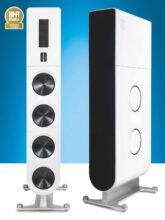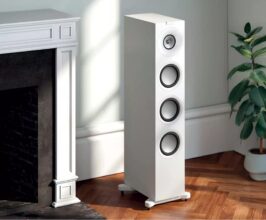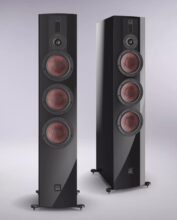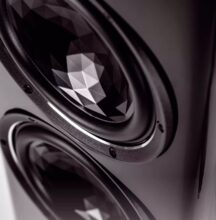ELAC Debut 3.0 DF63 Review
The Kiel-based company ELAC also operates a development department in the USA. The latest result of the transatlantic cooperation is the Debut 3.0 DF63 floorstanding speaker.
The traditional Kiel-based company has long specialized in speakers ranging from entry-level to high-end, alongside the production and distribution of turntables and electronics. With the new Debut series, they have completely revised and relaunched an entire range of speakers. The US research center in Orange, California, evidently approached the suggestions from the company management on the Baltic Sea with open ears and eyes.
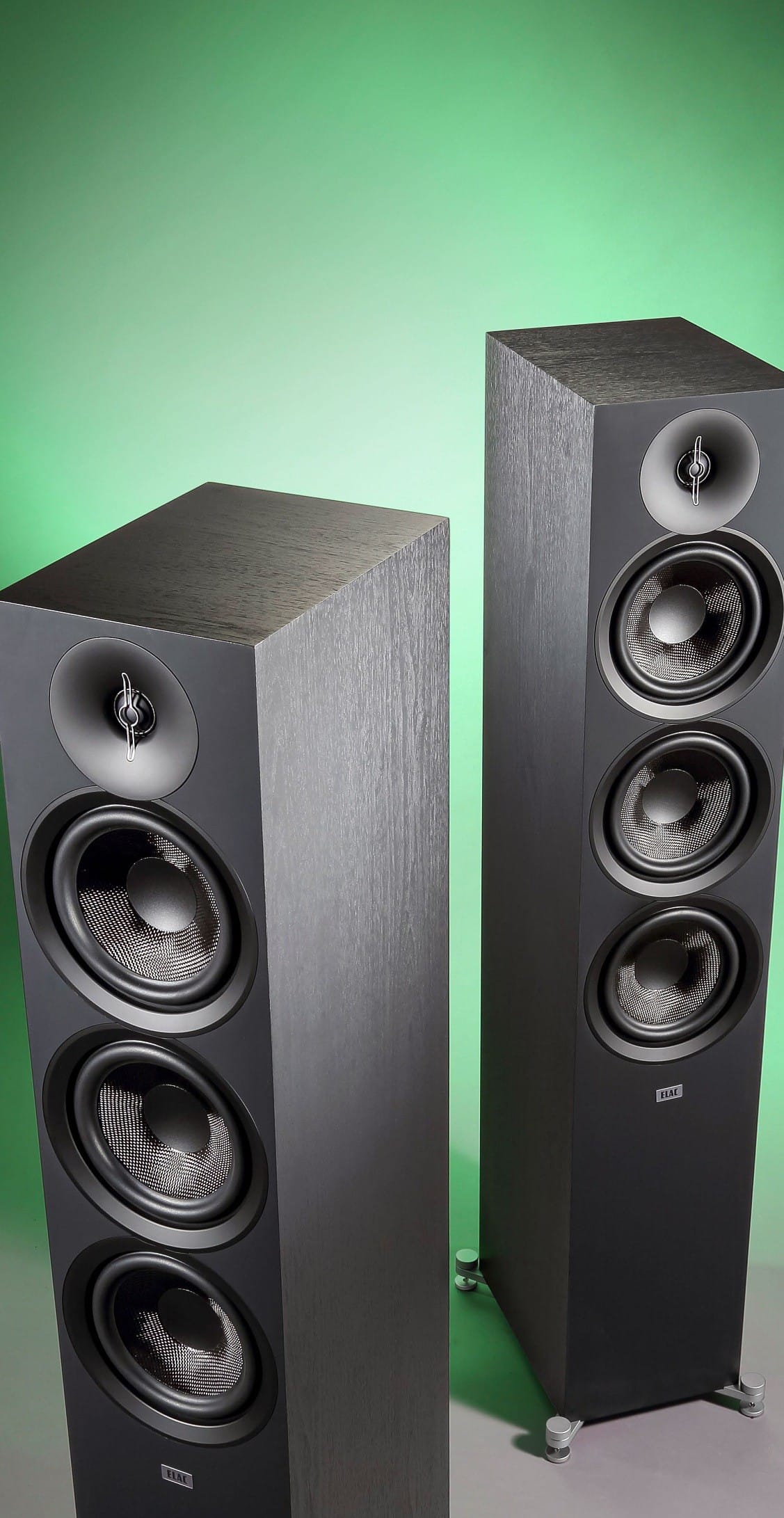
The design of this speaker series, which consists of seven models, has nothing to do with the previously common laid-back US production style. First and foremost, the top model we tested here, the DF63, shows no lack of attention to detail.
How can we tell? Well, for example, by the neatly fitted drivers, whose screws are discreetly hidden under a cover. Or by the magnetically attached grilles, the cleanly applied finish, and the very solid outriggers with height-adjustable, stable spikes complete with washers.
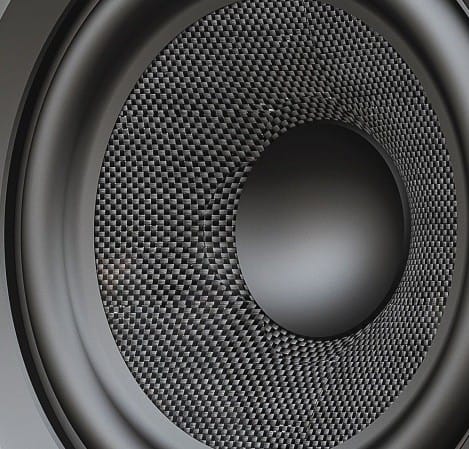
We are also pleased with the stable single-wire connection panel. Thankfully, they have dispensed with bi-wiring, which is pointless in this price category.
But besides these external details, we should not forget the speaker’s real task: to convert electrical energy into sound as unchanged as possible. Efforts and care invested in numerous important details always pay off in the end.
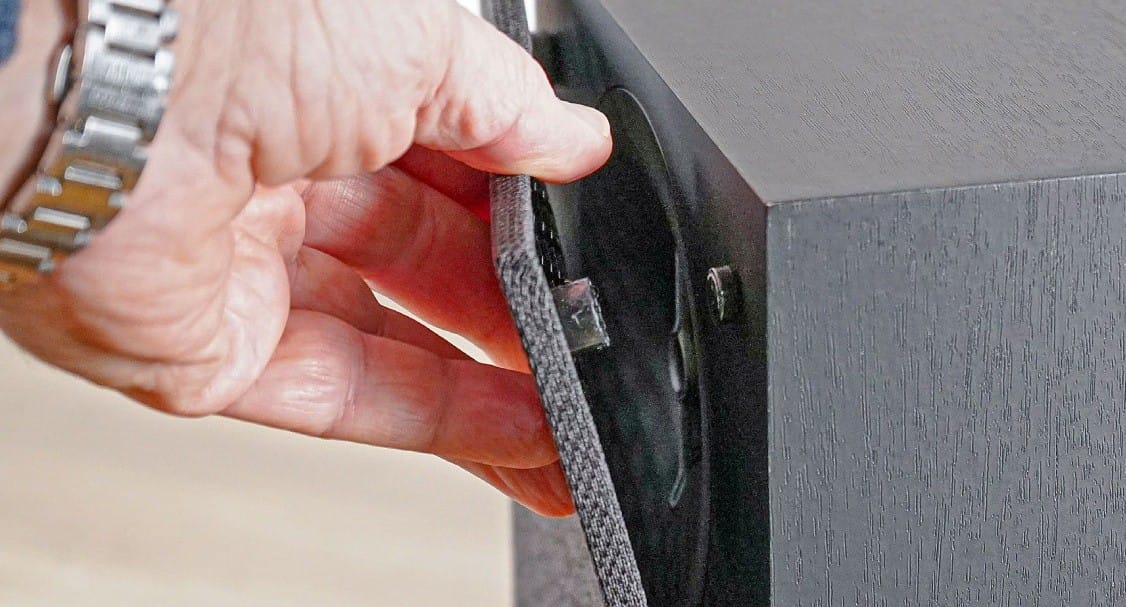
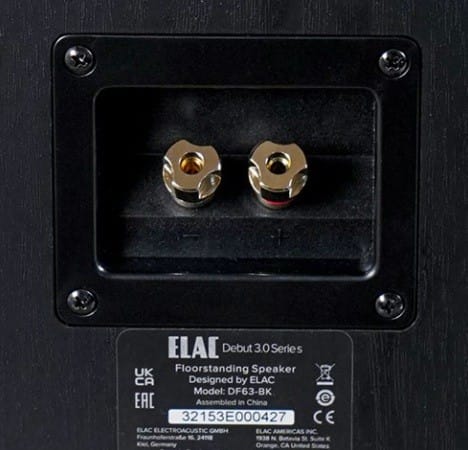
Cost-Cutting Leaves Its Mark
What good is a sturdy and shapely cabinet if it is combined with drivers that color or distort the sound? Exactly – that would be money wasted. Conversely, it’s no better: high-quality drivers only make sense if they’re used in the right environment. This environment includes proper matching of the drivers, a loss-free and electrically optimal crossover, and the right amount of internal damping of the cabinet, as well as at least solid internal wiring, all of which should not be underestimated.
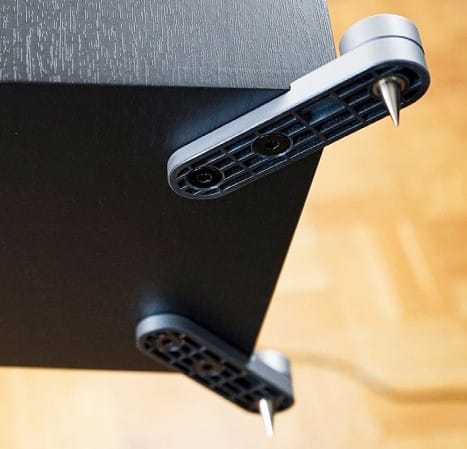
ELAC meets some of these demands for a speaker in this price range surprisingly well. In other areas, however, you can see that costs had to be calculated very tightly to keep the price just under the four-digit range. This is noticeable, for example, in the stability of the MDF cabinet, which is only 16 millimeters thick, as well as in the crossover components and the cables used.
In return, the drivers, considered by almost all speaker developers to be the heart of any speaker, are all the more impressive. They are not off-the-shelf units or old stock gathering dust in the back of a warehouse, but developed specifically for this speaker line.
Surprisingly High-Quality Drivers
The tweeter is a 25-millimeter aluminum dome with a phase plug, mounted without visible screws in a funnel-shaped waveguide. This is designed to achieve especially broad and even dispersion and to optimally match the tweeter’s efficiency to that of the midrange driver. The midrange driver’s 6.5-inch (16.5 cm) cone is made of woven aramid fiber, promising a very good ratio of low mass to high stiffness.
The two woofers, also the same size, use this membrane material but have a “motor” (magnet system and voice coil) adapted for their intended use.
This explains why the rear-mounted crossover can get by with only a few components – the drivers are inherently designed for their respective roles, requiring only minor corrective measures in the crossover.
The Setup in the Listening Room
All good so far? Well, as always at 7Review, the final verdict – whether our thumb goes up, down, or stays neutral – is made in the listening room.
We set up the slender floorstanding speakers in our smaller listening room of about 20 square meters. They were driven by both the Bluesound Node Nano streamer and its bigger brother, the Node. Amplification was alternated between the Marantz Model 60n and the long-standing insider’s tip, the Exposure 2510, which has reliably served as a nearly insurmountable benchmark in its price class for years. For cabling, we stuck to a Viablue series, also appropriate in terms of price.
When positioning the ELAC, keep in mind that the bass reflex ports are on the back, so some sound energy is radiated backward as well.
At least 30 centimeters of space from the wall is required; otherwise, the bass will rumble. We placed the speakers about two meters apart (inner edge to inner edge), with the listening distance slightly greater, and angled them in a bit. We leveled the speakers with a spirit level and tightened the spikes. These are precisely the famous small details that often decide whether you’re moderately satisfied or can’t bear to part from your system and the associated musical enjoyment. This is fundamentally possible even in the moderate price class we are dealing with here.
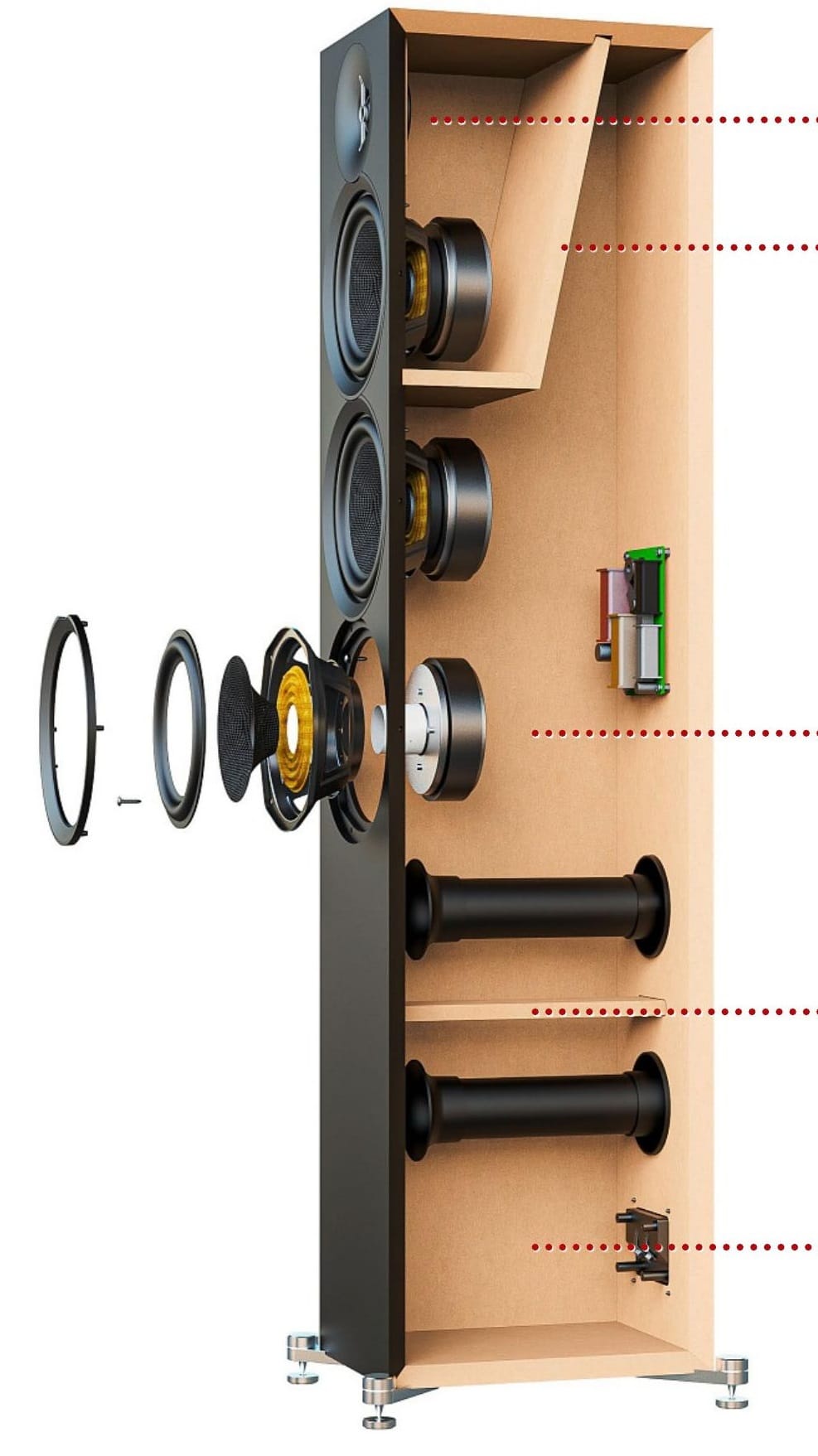
With the class-appropriate and promising details, we entered the listening room with some anticipation to explore the ELAC’s acoustic capabilities. The lab had previously warned us against setting expectations too high. The reason lay in the measurement results: the frequency response and impulse response did not turn out textbook-perfect. The measured distortion values, however, were decent and proof of the drivers’ good quality, while the efficiency of 82 dB suggested that a bit more amplifier power than usual would be welcome to drive the ELAC.
Does It Sound as Measured?
In the listening room, it quickly turned out that, despite the frequency response not being optimized for tonal neutrality, the ELAC had a workable sonic signature. Since its designers filtered out the very lowest tones, the speaker did not excessively tend toward muddiness or an unseemly booming in the bass region.
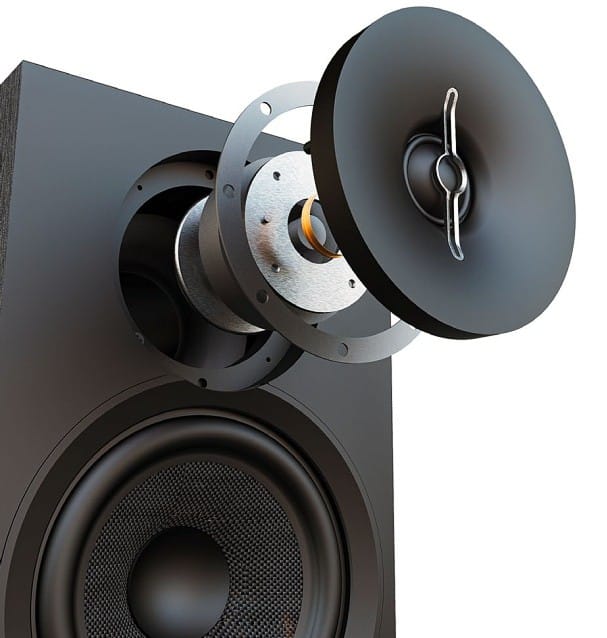
Otherwise, if it had deeper bass extension, at higher volumes the cabinet could have started to resonate undesirably. Instead, the speaker somewhat “fools” the listener by elevating the frequency range starting at about 100 Hertz, giving the sound a certain fullness. This can be clearly heard with male voices, for example Johnny Cash, but also when reproducing cellos. In principle, there’s nothing wrong with that, but it would be less tonally distorting if this elevation were not so broadband, extending up to around 1 kilohertz.
The Cabinet Resonance Issue
The trick of boosting the upper bass range is fundamentally quite common and is also used by many manufacturers – but for good reason, usually only in a narrow band. Here, not only is the slight coloration bothersome, which one might get used to depending on the music genre, or might hardly notice.
The bigger drawback is that it messes up the proportional imaging of voices and instruments. Voluminous instruments like a grand piano appear altered in their spatial dimensions. For example, when listening to Martha Argerich interpreting Tchaikovsky, this becomes evident very quickly. If a grand piano is embedded in a jazz band, as in Dave Brubeck’s “Take Five,” you sense that the sound image, for all its liveliness, doesn’t quite lock in. The reproduction of the drums, the audience’s enthusiasm, and the clarinet’s timbre are also not entirely convincing.
With pop and rock music, there is a lack of precise localization, and the sound does not detach from the speakers as effectively as it can with other speakers. However, timing, drive, and the retrieval of details are still done well. Queen’s “We Will Rock You,” for example, is quite fun. The well-tuned, non-intrusive, distortion-free tweeter plays a decisive role here.
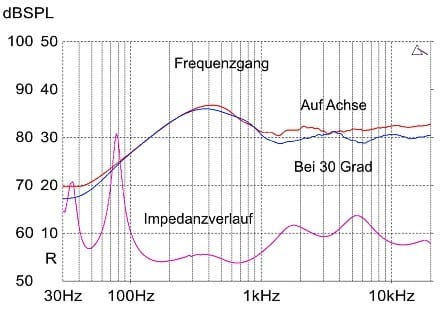
The live atmosphere of Deep Purple’s “Made in Japan” also comes across well. The soundstage expands nicely in width, and the depth gradation also has good quality.
If one were to make the crossover tuning a bit more neutral and eliminate the cabinet resonances, the ELAC would certainly be a very interesting alternative and could even be considered a really good speaker and a secret tip in its price category. Perhaps a call from Kiel could find a sympathetic ear at the development team in California, prompting them to address the current weaknesses and give the speaker the necessary fine-tuning? This speaker has potential.
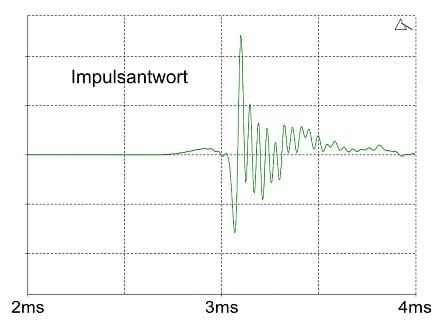
WHAT WE LISTENED WITH

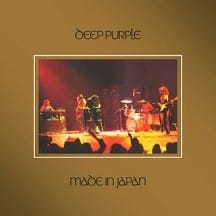
ELAC DEBUT 3.0 DF63 Tech Specs
| Category | Details |
|---|---|
| Product / Price Range | Floorstanding Speaker (Passive) / Up to $1,500 |
| Website | www.elac.com |
| Dimensions (H × W × D) | 19.5 × 110 × 26.8 cm |
| Weight | 17.6 kg |
| Distributor (Germany) | ELAC |
| Contact Number | +49 431 647740 |
| Design | Dynamic, 3-way, Bass Reflex |
| Terminal | Single-Wire |
| Placement Advice | At least 50 cm from walls, slight angling |
Performance and Ratings
Sound (Weight: 60%)
| Category | Details |
|---|---|
| Sound Quality | Tonally not perfectly balanced, moderate focus but lively and pleasant high-frequency response |
Measurements (Weight: 15%)
| Category | Details |
|---|---|
| Frequency Response | Adequate, noticeable emphasis between 100 and 1,000 Hz |
| Sound Pressure (dB) | Sufficient (82 dB) |
| Impulse Response | Adequate, cabinet resonances visible |
| Minimum Impedance | Excellent (3.95 Ohms at 120 Hz) |
| Distortion | Good (0.75% / 0.24% / 0.18% at 63 Hz / 3 kHz / 10 kHz) |
| Compatibility | Good, but requires a powerful amplifier |
Features (Weight: 25%)
| Category | Details |
|---|---|
| Setup | Good |
| Manual Quality | Good |
| First-Time Setup | Good |
| Tone Adjustment Possible | No |
| Cabinet Options | Only available in black |
| Accessories | Grilles, spikes, base stands |
| Build Quality / Finish | Good |
| Upgradeable | No |
| Warranty (Years) | 5 |
Verdict
When you purchase through links on our site, I may earn an affiliate commission. Here’s how it works.









